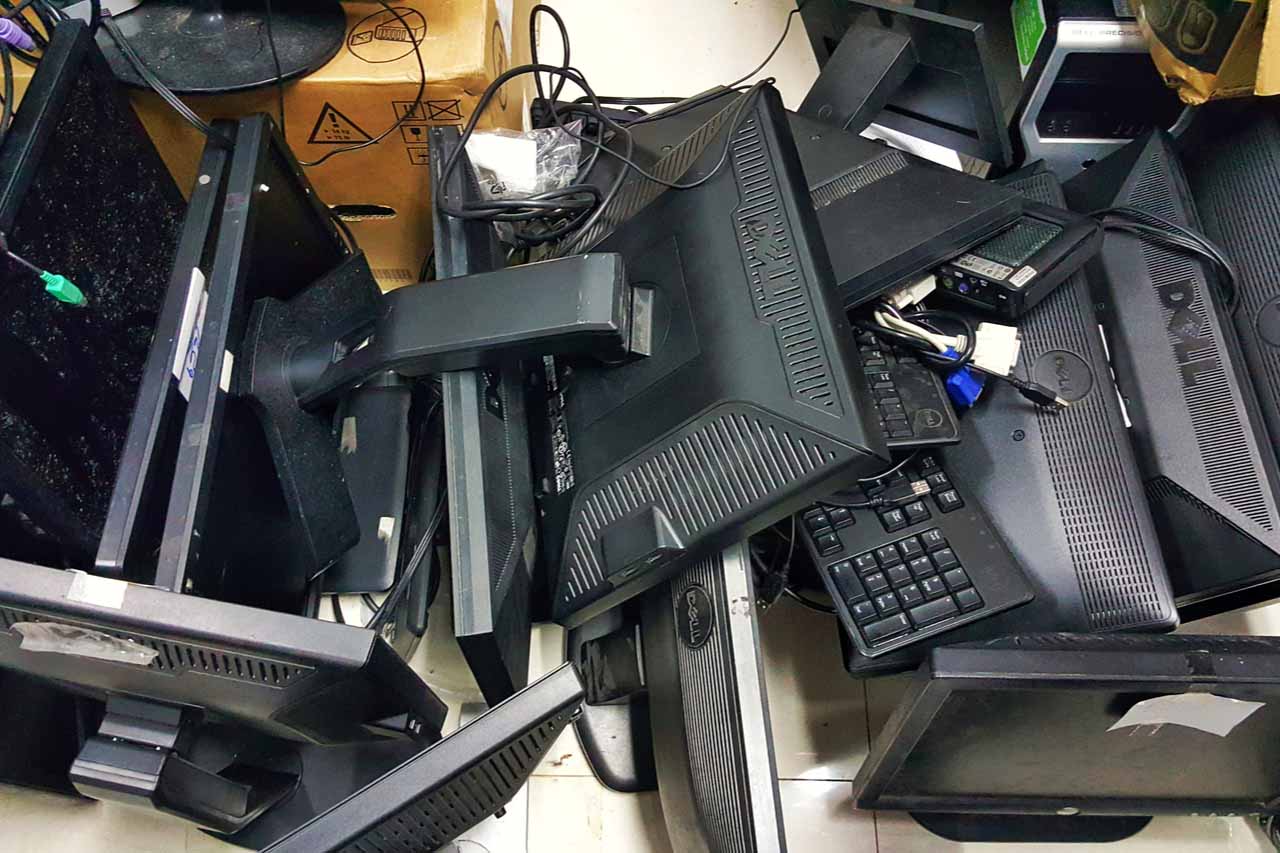
The scheme revolved around disposing of high-value electronics as scrap for recycling, and then reselling the devices for their higher market values. | Koy Hipster/Shutterstock
Three individuals have pleaded guilty to a scheme through which used electronics from The Ohio State University were artificially undervalued and disposed of as “scrap,” only for the downstream vendors to turn around and sell them for higher values and pay kickbacks to the manager of the university’s surplus department.
The U.S. Attorney’s Office for the Southern District of Ohio in June announced the last of three guilty pleas in the financial fraud conspiracy case.
According to court documents, Michael Brammer was employed as manager of OSU’s surplus department until mid-2020, where he was in charge of evaluating and disposing of used property at the university. This included computers and peripheral electronics, which were disposed of in different ways depending on condition: Electronics deemed suitable for recycling were disposed of in bulk, at low cost, to recycling vendors, while devices suitable for resale were sold at public sales, for higher values.
Prosecutors alleged that, from 2014 until 2020, Brammer carried out a scheme with two surplus electronics vendors — Robert Howard of ME Electronics and Abraham Amira of Mar Z and Ohio Surplus — through which the vendors would identify surplus electronics they wanted from the university, and Brammer would designate those devices as electronic scrap suitable for recycling even though they were in reusable condition.
Brammer knew the devices “held significant value and should be retained for the Surplus Department to sell at a public sale,” prosecutors wrote. “Nevertheless, he treated these assets as recyclable and sold them, on behalf of the Surplus Department … at prices he knew to be well below their market value.”
After the vendors received the devices, they would transfer sums of cash to Brammer in kickback payments, prosecutors wrote.
The scheme was coordinated over WhatsApp text messages and used false invoices. As one example, the court documents state: “On or about August 16, 2018, Brammer wrote an invoice from the Surplus Department to ME Electronics for the following: 24 ‘Scrap CPU,’ each for $5, for a total of $120; 19 ‘Scrap Monitors,’ each for $2, for a total of $38; 1 ‘Recycle Box’ for $50; and 7 ‘Dell A10 (no power),’ each for $5, for a total of 35. The total invoice was $243.” That same day, Brammer deposited $6,000 in cash into his bank account. Howard, of ME Electronics, had withdrawn $6,000 from his own account a day earlier.
Prosecutors alleged that the total loss to the university was at least $650,000 in what would have otherwise been revenues from the surplus devices. Because OSU receives federal grant funding, prosecutors charged the defendants with federal program fraud.
Brammer was charged in 2022 and pleaded guilty that year, Howard was charged in January 2025 and pleaded guilty in April, and Amira was charged in 2023 and pleaded guilty last month.

